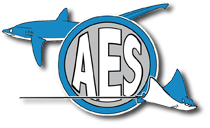 Dr. Christopher Neff is a Lecturer in Public Policy in the Department of Government at the University of Sydney. He completed the first PhD on the “Politics of Shark Attacks” and has been published in Marine Policy, Coastal Management and the Journal of Homosexuality.
Dr. Christopher Neff is a Lecturer in Public Policy in the Department of Government at the University of Sydney. He completed the first PhD on the “Politics of Shark Attacks” and has been published in Marine Policy, Coastal Management and the Journal of Homosexuality.
Jaws is a great horror movie. Personally, it’s one of my favorites. Politically, it kills me. While it has certainly inspired generations of marine biologists, researchers and social scientists (like me) since its release in 1975, it has also served as the most powerful vehicle to advance public fear of sharks in modern history. These two different implications become problematic because while sharks make for great movies, movies make for lousy public policy. When tragic shark bite incidents occur, there is a classic Jaws-esque analogy just waiting to be made. And sometimes the media circus turns into policy.
I recently wrote an article called “The Jaws Effect” for the Australian Journal of Political Science comparing policymaking in Western Australia and the movie Jaws. While, we see some of these comparisons in real-time the reason it is important to study this formally is because these moments can tell us about the tensions between politicians and scientists that lead to myth-based policies.
Read More “What Jaws Teaches Us About Scientists and the Future of Shark Bite Politics” »

